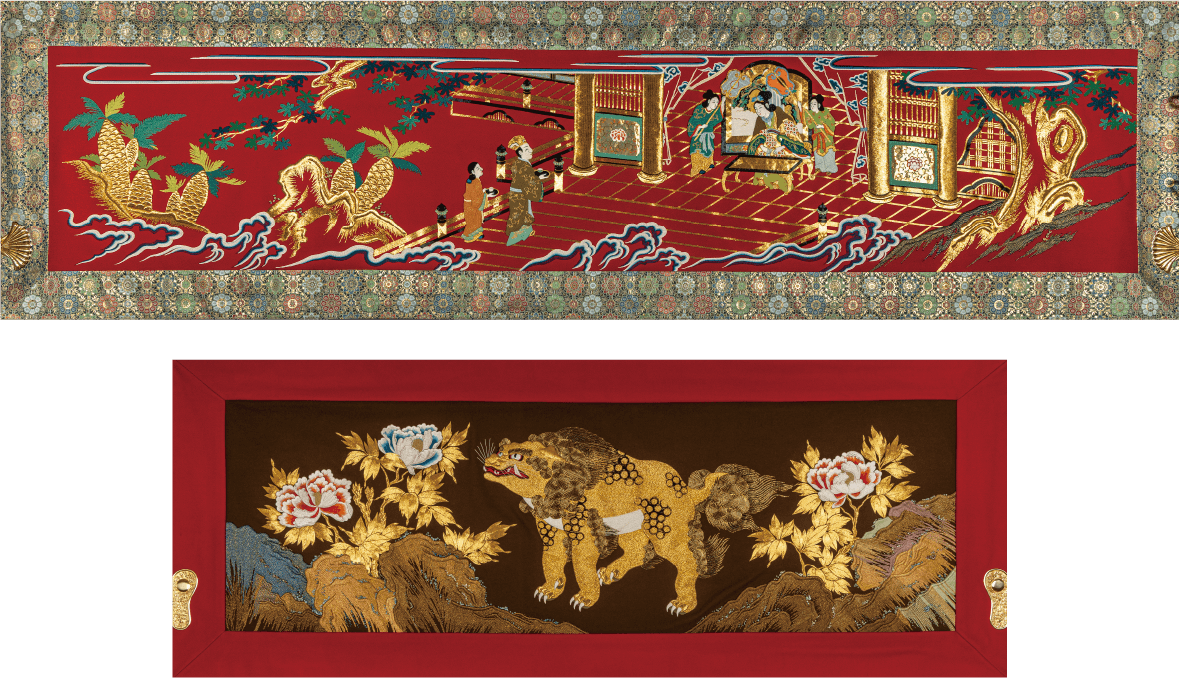
The most eye-catching decorations adorning the Tsuruga Yama floats are the elongated “Mizuhiki curtains” that embellish the sides of the stage platform. Using gold and silver thread, these curtains are crafted by utilizing a variety of techniques, such as thickly raised embroidery and hand-woven tapestries. The curtains are still preserved to this day, depicting gorgeous scenes from Chinese legends, and featuring auspicious motifs, such as the lion and peony or the phoenix and paulownia tree. There are also curtains that are said to have been drawn by popular Kyoto artists, such as Maruyama Okyo and Shiokawa Bunrin. These extravagantly made curtains are themselves extremely valuable works of art. From 2007 to 2012, Goshonozushi, Tojinbashi, and Kanegazushi Yama floats were new curtains that were created using the old Mizuhiki designs, and showed off the splendor of the floats. The old curtains still remain as important cultural properties.
In addition, while they are no longer used today, there are “farewell curtains” covering the rear that are made using European textiles, and front curtains with the town name dyed in cotton that are still preserved.
★ Mizuhiki curtains are characteristic cultural properties of Tsuruga, and are symbolic motifs of the Yama floats. Reproductions of the curtains can be found on pillars along the Tsuruga Station Shinkansen concourse, greeting visitors as they arrive.
